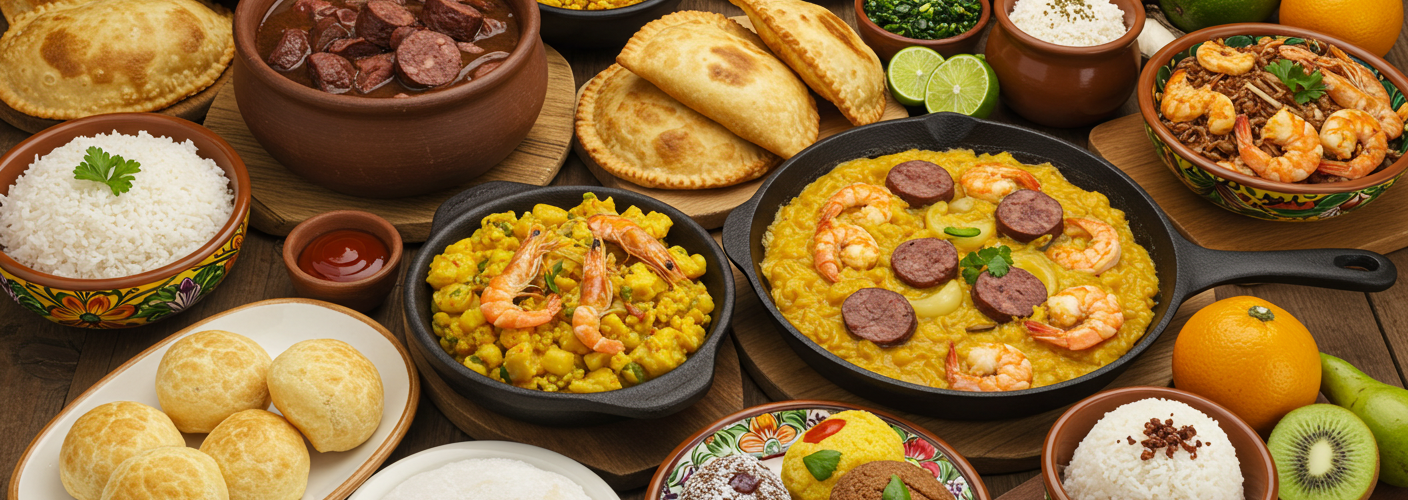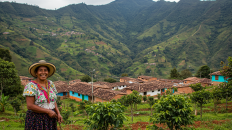Brazil is a land of immense diversity, both in its culture and its cuisine. The vast country is home to a melting pot of flavors and cooking styles, reflecting its Indigenous roots, African influences, and European colonial history. To understand Brazil’s culinary landscape is to embark on a flavorful journey that captures the essence of this vibrant nation.
One of the most iconic dishes in Brazilian cuisine is feijoada, a hearty black bean stew often made with a variety of meats such as pork, beef, and sausage. It is typically served with rice, collard greens, and orange slices. This dish is more than just a meal; it’s a cultural celebration often shared among family and friends. Feijoada’s origins trace back to the country’s colonial period and have evolved into a comfort food that is cherished nationwide, especially on Wednesdays and Saturdays.
Another staple that represents Brazilian cuisine is pão de queijo, or cheese bread. These delightful, chewy, and gluten-free rolls are made from tapioca flour and cheese, predominantly consumed as snacks or breakfast items. Originating from the state of Minas Gerais, pão de queijo has gained popularity throughout Brazil and beyond. Every bite is a warm embrace, making it a perfect introduction to the rich world of Brazilian snacking.
Seafood lovers will delight in moqueca, a traditional fish stew made with coconut milk, tomatoes, onions, garlic, and coriander. Depending on the region, variations of moqueca can be found, with the Bahia version featuring palm oil, adding to its richness and flavor. This dish beautifully captures Brazil’s coastal influences and is often served alongside rice and farofa, a toasted cassava flour mixture that adds texture and nutty flavor.
Brazil’s street food is another essential component of its culinary identity. The vibrant food stalls and vendors found in cities like São Paulo and Rio de Janeiro offer a variety of snacks. One such popular option is coxinha, a deep-fried dough filled with shredded chicken, giving it the appearance of a chicken drumstick. Coxinha embodies the spirit of Brazilian snacks, showcasing both creativity and flavor.
To satisfy your sweet tooth, look no further than brigadeiros. These chocolate truffles, made from condensed milk, cocoa powder, butter, and chocolate sprinkles, are a must for any celebration or gathering in Brazil. Often enjoyed at birthday parties, these treats symbolize joy and togetherness, making them a beloved dessert across the nation.
Moreover, Brazil’s beverage offerings are equally captivating. The national cocktail caipirinha, made from cachaça (a sugar cane spirit), sugar, and lime, embodies the country’s spirit. With its refreshing taste, it’s an ideal accompaniment to meals or a relaxed evening with friends.
In the northern regions of Brazil, unique ingredients such as açaí, tucupi, and manioc play a significant role in local dishes, emphasizing the Amazon’s lush biodiversity. The incorporation of such native ingredients not only showcases Brazil’s agricultural richness but also highlights its commitment to sustainability and preservation of traditional practices.
In conclusion, Brazilian cuisine is a testament to the country’s rich cultural tapestry. From the robust flavors of feijoada to the delightful sweetness of brigadeiros, every dish tells a story of tradition, community, and passion. So, whether you are exploring Brazilian food for the first time or rediscovering beloved recipes, prepare for a delicious adventure that celebrates the heart and soul of Brazil.




Add comment